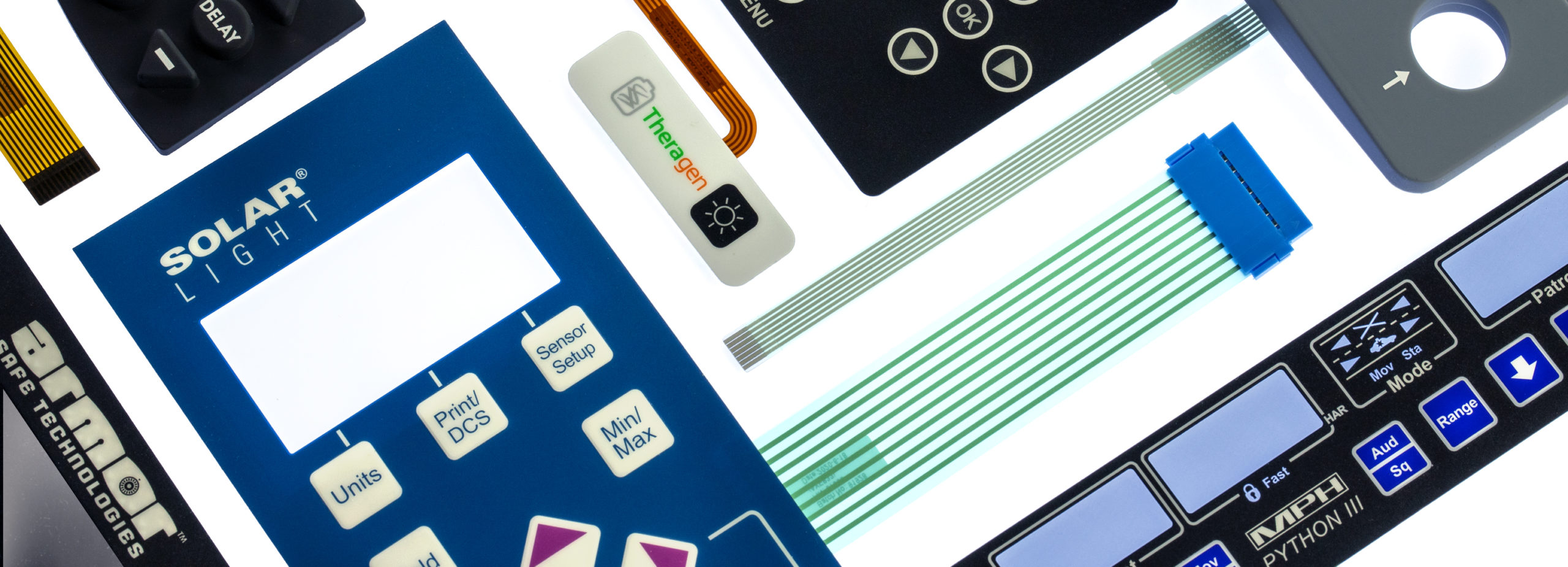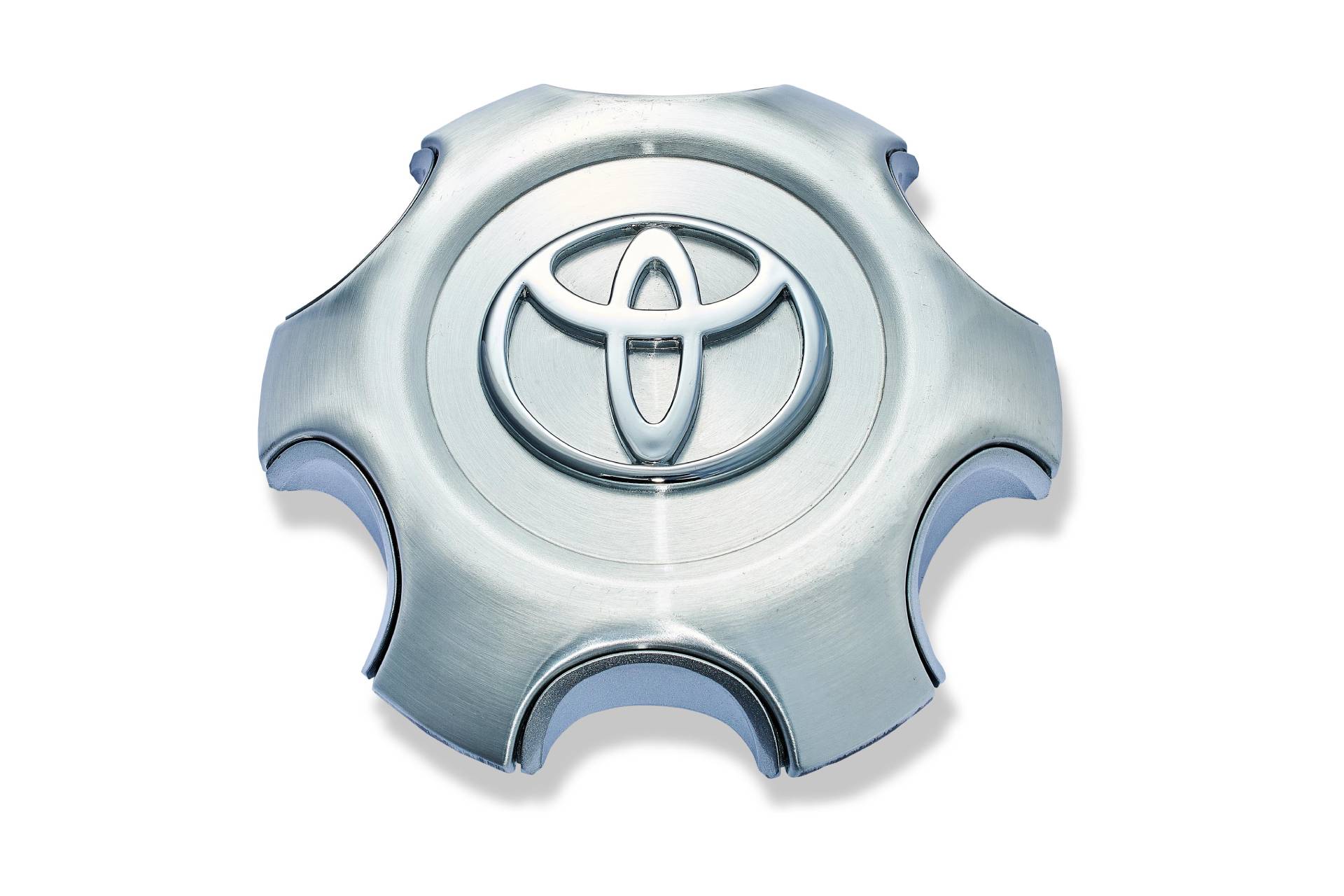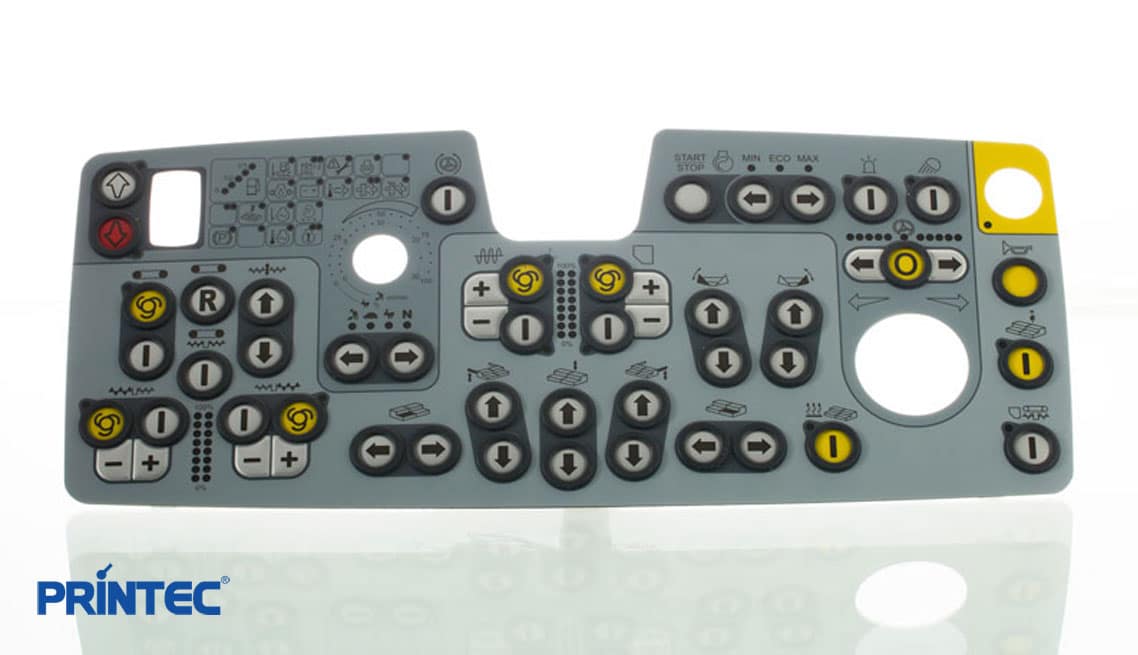Comprehensive Membrane Switch Manufacturer for Specialized Applications
Checking Out the Production Refine of Membrane Switch for Numerous Industries
The production process of Membrane buttons is an intricate endeavor that requires precision and focus to information. From selecting proper materials to applying strenuous high quality control measures, each step plays an important function in ensuring capability. Different industries, consisting of automotive and medical, depend on these elements for their distinct applications. Comprehending the details of this process discloses considerable understandings into just how these buttons are produced and their influence across varied fields.
Recognizing Membrane Switches Over: A Summary

Key Products Made Use Of in Membrane Switch Manufacturing
In Membrane switch manufacturing, the option of key materials considerably influences functionality and toughness. Conductive materials, adhesives, and finishes play important roles, while substratum selection affects general efficiency and integrity. Comprehending these components is vital for enhancing the layout and manufacturing of Membrane switches.
Conductive Materials Review
Conductive products play an essential duty in the functionality of Membrane switches, making sure trustworthy electrical connections within the tool. Typically used materials consist of silver, copper, and carbon-based inks, each offering unique advantages. Silver is preferred for its high conductivity and longevity, making it optimal for applications calling for durable performance. Copper, while somewhat less conductive than silver, is a cost-efficient choice often used in printed circuits. Carbon-based inks give a flexible option, appropriate for applications where versatility and lower prices are focused on, although they have reduced conductivity compared to metal options. The option of conductive materials directly influences the overall reliability, life-span, and efficiency of the Membrane switch, making it a vital factor to consider in the production process.
Adhesives and Coatings
Adhesives and layers are necessary parts in the production of Membrane buttons, providing vital bonding and safety buildings. These materials assure that various layers of the button, including graphic overlays and circuitry, adhere firmly to one another, enhancing resilience and capability. Frequently made use of adhesives include pressure-sensitive adhesives (PSAs) and epoxy-based solutions, which offer strong bond and strength. Coatings, such as polyurethane or acrylic, offer to protect against ecological factors, including wetness, abrasion, and chemicals. In addition, coatings can improve tactile responses and aesthetic charm, contributing to the overall individual experience. The choice of proper adhesives and coverings is crucial for optimizing performance and longevity in varied applications throughout numerous sectors, making certain that Membrane switches over meet certain functional demands.
Substrate Choice Aspects
Substratum selection plays a vital role in the production of Membrane switches, as it substantially influences their total efficiency and sturdiness. Secret materials such as polyester, polycarbonate, and flexible printed motherboard (FPCBs) are commonly made use of for their unique buildings. Polyester is favored for its cost-effectiveness and resistance to abrasion, making it suitable for applications with high wear. Polycarbonate offers premium quality and influence resistance, ideal for environments requiring high presence. FPCBs supply enhanced adaptability and are typically utilized in complex styles. The option of substrate additionally influences factors like thermal security, chemical resistance, and ease of printing. Ultimately, picking the proper substratum is vital for making certain the capability and long life of Membrane changes across numerous sectors.
The Design Refine of Membrane Switches
The style procedure of Membrane switches is a critical stage that considerably influences the capability and looks of the end product - membrane switch manufacturer. It begins with defining the details requirements of the application, including measurements, button format, and tactile feedback preferences. Designers must think about individual communication, guaranteeing that the button is intuitive and accessible.Next, materials are picked based on longevity, adaptability, and environmental resistance. The integration of graphics and branding components is additionally vital, as it improves aesthetic allure and interaction. Prototyping enables iterative screening, enabling modifications based upon user responses and efficiency evaluations.Additionally, the design should account for the electrical components, such as connectors and circuits, making certain reliability and simplicity of use. Eventually, a successful design balances functionality, visual appeals, and individual experience, leading the way for reliable production and durable efficiency in numerous sectors
Printing Strategies for Membrane Switches Over
The printing techniques utilized in Membrane button manufacturing play an essential function in establishing the last product's top quality and functionality. Display printing offers advantages such as toughness and lively shade application, while digital printing developments offer versatility and accuracy in style. Comprehending these approaches can significantly affect the total efficiency of Membrane buttons in different applications.
Display Printing Benefits
Numerous benefits make screen publishing a preferred method for creating Membrane switches. This approach enables premium, vivid colors and thorough styles, which are crucial for individual interface applications. Screen printing is specifically efficient for using thick ink layers, enhancing sturdiness and tactile responses. Additionally, it offers superb adhesion to numerous substrates, making certain long life sought after settings. The process is cost-effective for huge manufacturing runs, as it lessens arrangement time and waste. Furthermore, screen printing sustains a variety of inks, consisting of specialty and UV-curable options, making it possible for adaptability in style. Its capacity to create regular outcomes across multiple units makes it a trustworthy option for producers going for top quality and effectiveness in Membrane button production.
Digital Printing Innovations

Advancements in digital printing modern technology are transforming the production of Membrane buttons, supplying suppliers innovative remedies that enhance layout flexibility and performance. Digital printing enables for complex layouts and high-resolution graphics, allowing personalized branding and functionality without the restrictions of standard approaches. This strategy reduces configuration times and costs, facilitating shorter manufacturing runs and very little waste, making it suitable for organizations with differing needs. Additionally, advancements in ink formulations give better resilience and about his adhesion, making sure long life in different environments. As sectors significantly look for personalized and complicated styles, electronic printing sticks out as a crucial strategy, establishing a brand-new criterion in Membrane switch production. The assimilation of these advancements positions makers to fulfill developing market requires effectively.
Setting up and Layering of Membrane Switch Parts
Mindful assembly and layering of Membrane switch elements are vital to assuring functionality and longevity. This process begins with the exact positioning of different layers, including the graphic overlay, adhesive, circuit layer, and backing product. Each part needs to be thoroughly placed to preserve electric integrity and customer interface responsiveness.During assembly, conductive traces are related to the circuit layer, generally made from products like polyester or polycarbonate. This layer is crucial, as it transmits signals when pressure is used. The adhesive utilized for bonding these layers is additionally picked for its capacity to sustain environmental stresses while preserving a safe and secure bond.Heat and pressure are commonly used throughout the assembly process to determine that the layers adhere correctly without endangering the functionality of the button. Finally, attention is offered to the edge sealing to secure versus wetness and contaminants, protecting the long life of the Membrane button in different industrial applications.
High Quality Control Measures in Membrane Switch Production
Quality assurance procedures play an important duty in look here making certain the dependability and efficiency of Membrane changes following the assembly and layering of their elements. In the production process, a number of essential examinations are performed to copyright high quality requirements. These include visual examinations for problems in printing and glue application, in addition to functional examinations to verify the responsiveness of each switch.Additionally, ecological testing is performed to evaluate the buttons' durability against temperature variations and humidity direct exposure. Manufacturers usually implement statistical process control (copyright) strategies to monitor production consistency, enabling early discovery of anomalies.Furthermore, traceability systems are established to track elements and materials, making certain accountability and promoting remembers if necessary. Calibration of devices and adherence to industry requirements are also crucial to preserving item stability. Jointly, these quality assurance steps secure the performance of Membrane switches throughout numerous applications, inevitably improving client complete satisfaction.
Applications of Membrane Changes Throughout Different Industries
Membrane switches are utilized across a varied selection of markets, showcasing their convenience and versatility. In the medical industry, they offer trusted and waterproof interfaces for gadgets such as diagnostic devices and mixture pumps, making sure hygiene and ease of use. The vehicle market uses Membrane buttons for dashboard controls, making it possible for smooth communication between the chauffeur and car systems.In consumer electronic devices, these buttons are discovered in home appliances and portable gadgets, providing a smooth, modern aesthetic while improving functionality. Industrial applications additionally take advantage of Membrane changes for machinery control panels, where sturdiness and resistance to rough problems are essential.Furthermore, the aerospace and protection sectors utilize Membrane buttons for cockpit instrumentation and communication systems, prioritizing reliability and efficiency under severe problems. Overall, Membrane switches play a try this site crucial role in boosting the customer experience and operational efficiency throughout numerous domain names.
Frequently Asked Inquiries
Just how Lengthy Does It Take to Produce a Membrane Switch?
The manufacturing time for a membrane switch normally varies from a few days to several weeks - membrane switch manufacturer. Factors influencing this period include layout complexity, material schedule, and production volume, all influencing the total timeline noticeably
What Is the Regular Lifespan of a Membrane Switch?
The common life expectancy of a membrane button normally ranges from 1 to 5 million actuations, relying on aspects such as worldly quality, ecological problems, and usage frequency, considerably impacting durability and general performance.
Can Membrane Switches Be Custom-made for Details Applications?
Membrane switches can without a doubt be tailored for specific applications. Their design adaptability enables modifications in size, form, colors, and graphics, making certain compatibility with distinct needs across numerous sectors and boosting functionality and customer experience.

Are Membrane Changes Environmentally Pleasant?
The environmental impact of Membrane switches over varies. Some materials utilized may not be environmentally friendly, while advancements in manufacturing procedures are increasingly focusing on sustainability, intending to minimize waste and advertise recyclable components in their manufacturing.
What Are the Common Failure Settings of Membrane Buttons?
Typical failure modes of Membrane switches include delamination, glue failing, wear and tear from use, wetness access, and electric failings. These concerns can considerably impact capability, efficiency, and life-span in different applications across different industries. Membrane buttons can be tailored to fit certain design requirements, such as performance, shape, and dimension, making them very adaptable.The construction usually includes multiple layers, including a graphic overlay, glue, and a circuit layer, which function together to produce a smooth user experience. In Membrane button production, the choice of crucial materials considerably influences performance and sturdiness. The automotive industry employs Membrane switches for dashboard controls, enabling seamless interaction between the motorist and vehicle systems.In customer electronics, these switches are discovered in home appliances and handheld tools, supplying a streamlined, contemporary visual while boosting performance. Industrial applications also utilize Membrane switches for machinery control panels, where sturdiness and resistance to extreme problems are essential.Furthermore, the aerospace and protection markets use Membrane switches for cockpit instrumentation and interaction systems, focusing on reliability and efficiency under severe problems. Membrane switches can without a doubt be personalized for certain applications.